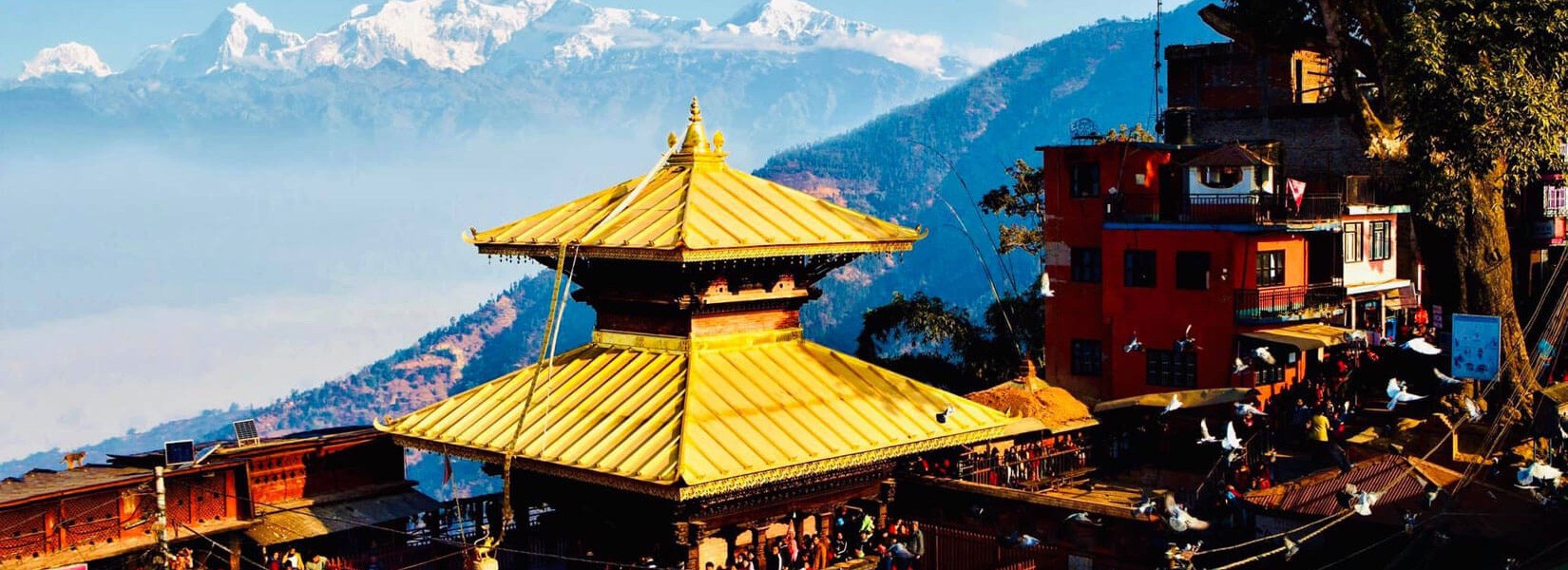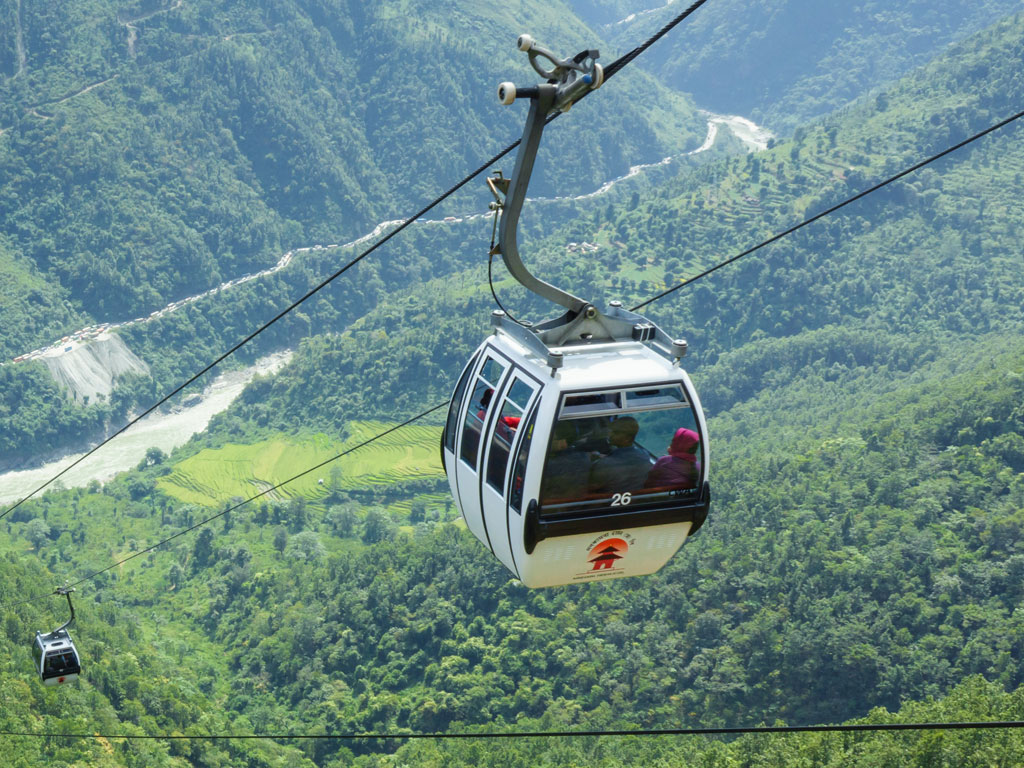Manakamana Mai’s temple : Famous religious site
Mankamana Temple
Manakamana Mai is located in Shahid Lakhan village municipality of Gorkha district is considered as an important Shakti Peeth.The Manaslu- Himachali and Annapurna ranges can be viewed to the north of the temple
Annually, around 11-12 lakh devotees visit Manakamana for Darshan. Especially on the days of Dashain, Nagpanchami, Ashtami, Guthi Panchami and Vaishakh Panchami, a large crowd of devotees come here to worship. Sacrifices are offered here on every Ashtami day.There has been a religious belief that the desire (manokanksha) of the mind will be fulfilled by visiting Manakamana Mai. Therefore, this temple is a very important religious tourist destination. The first martyr in Nepal, Lakhan Thapa Magar, also seems to have used the fame of Manakamana Mai and Manakamana First Priest Siddha Lakhan Thapa strategically to increase public support for his rebel campaign.

Manakamana
History Of Manakamana
It is believed that Rani Kalawati of Ram Shah was the incarnation of Manakamana Mai. Siddha Lakhan Thapa Magar was a servant of Rani Kalawati in the Gorkha court. After the death of King Ram Shah, the king’s tomb was erected at a place called Dobhan Beni (Ramshahghat) on the Marshyangdi river and Daraundi. The queen was ready to go. Seeing this, devotee Lakhan Thapa Magar mourned in mourning, while Rani reminded Lakhan Thapa “I will give you another chance to serve me. You return to your village Kafak. I will fulfill the desires of the devotees by being born in the same place as a rock. ‘ According to a religious statement, six months later, when a man was plowing cattle at the site of Manakamana Bhagwati’s temple, milk and blood started flowing from a rock. It is said that Siddha Lakhan Thapa, who had divine vision, stopped the flow of blood after performing Tantric rituals and a temple of the goddess was established in the same bag.
After the incident, the king of Gorkha appointed Lakhan Thapa and his children as priests to serve Manakamana Mai and sealed the land for the daily worship. The current priest of Mai, Insan Thapa Magar, is considered to be the eighteenth generation of Siddha Lakhan Thapa. The pagoda-style Manakamana Mai temple is believed to have been built in the 17th century. As the king of the Shah dynasty and the common favorite goddess of the Nepali people, Manakamana is the special goddess Bhagwati.

Cablecar
Nitya Puja is performed in the temple from 7 am to 6 pm. Sacrifice and worship for the common people begins only after the priest circumambulates the temple after completing the inner worship. The temple is located 12 kilometers southeast of Pokharithok Bazaar, the district headquarters of Gorkha district. Situated at an altitude of 1303 m above sea level, the temple complex overlooks the Mahabharat Lake and Chimkeshwari hills to the south, as well as the peaks of Annapurna and Manaslu in the north.
Also, from the temple precincts, a beautiful view can be seen on the horizon during sunrise and sunset. Manakamana can be reached by walking uphill for 3/4 hours from Aanukhaireni of Tanahu. Also, it temple can be reached from Aanbukhaireni towards Gorkha from Anuwa and from Gorkha district headquarters via Bunkot, Ghairung, by car.
Siddha Lakhan Thapa Magar was a servant of Rani Kalawati in the Gorkha court. After the death of King Ram Shah, the king’s tomb was erected at a place called Dobhan Beni (Ramshahghat) on the Marshyangdi river and Daraundi. The queen was ready to go. Seeing this, devotee Lakhan Thapa Magar mourned in mourning, while Rani reminded Lakhan Thapa “I will give you another chance to serve me. You return to your village Kafak. I will fulfill the desires of the devotees by being born in the same place as a rock. ‘ According to a religious statement, six months later, when a man was plowing cattle at the site of Manakamana Bhagwati’s temple, milk and blood started flowing from a rock. It is said that Siddha Lakhan Thapa, who had divine vision, stopped the flow of blood after performing Tantric rituals and a temple of the goddess was established in the same bag.
For the passengers going to visit Manakamana Bhagwati today, the Prithvi Highway is about 2.7 km from a place called Cheres near Kurintar under Ichchakamana village municipality of Chitwan district to near Manakamana temple complex. Only the longest car service has been operated. After a 10-12 minute journey by car, you can reach the upper station at Manakamana under Shahid Lakhan village municipality of Gorkha. After a 2/3 minute walk you can reach Bhagwati temple.
Currently, Manakamana Mai’s temple is being renovated by the committee
Reconstruction work is underway. Under the supervision of the Reconstruction Committee, gold plating is being done on the copper leaf on the roof. In a few months, Manakamana Mai’s temple will be completed.
Accommodation
There are different kinds of hotels and lodge in Manakamana Temple. A single room cost from Rs. 100 to Rs 600 depending upon facilities one wants to avail. In cold days, most of hotels are closed but open sufficient enough to hold the guests at the winter.
Walking or Trekking to Manakamana
There is a way to walk from Gorkha to Manakamana, passing along the hill-top ridge Manakamana Suntalathrough forest and paddy. It takes about 8 hours walk to cross the river, hills and the forest. You can reach with a simple compass. There are few rivers in the way, the bridges are often broken. Therefore, it is better to be careful, or it is best not to hike in rainy seasons.
You can walk from bank of Marsyandi River from Abu Khaireni. It takes about 3 hours to reach the top. It was old path before the cable car started its operation.
Manakamana is also famous for the sweet juicy small oranges (Tangerine). The hill of it is full of oranges in the season.
FAQ’S:
Do you need to book in advance to visit Manakamana Temple?
What’s the best way to see Manakamana Temple?
What hotels are near Manakamana Temple?
What restaurants are near Manakamana Temple?
Comment Here!